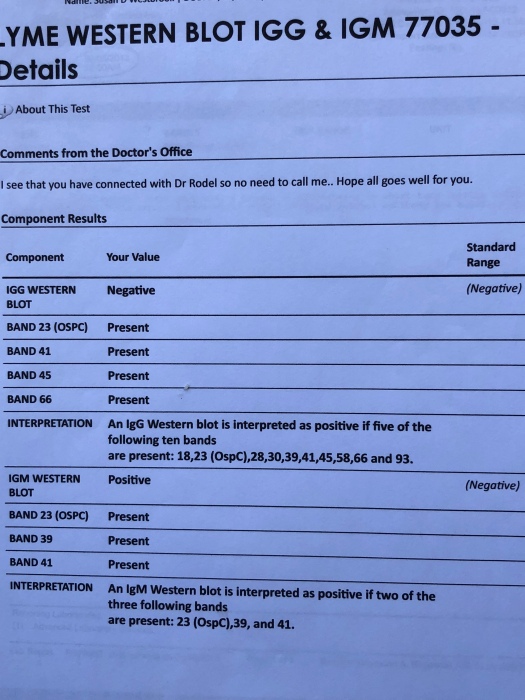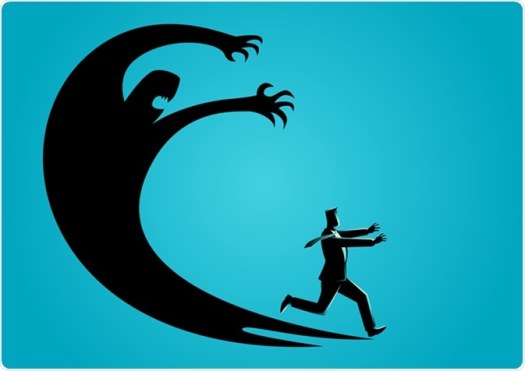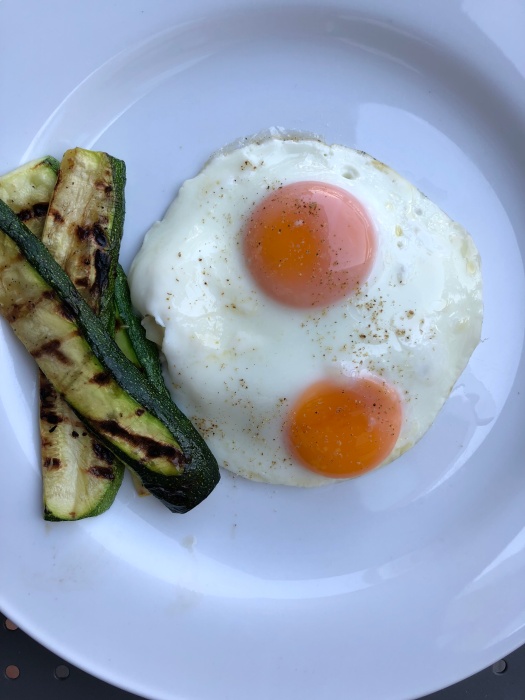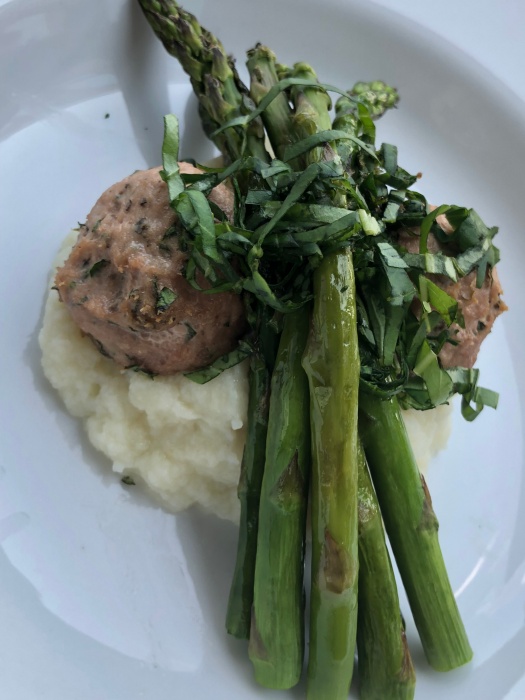It’s difficult to find the words to adequately describe the ways chronic lyme disease has ravaged my brain and body. As difficult as it is, I think it’s important to share my story. First, I hope to provide encouragement, help and support to anybody who may be in a similar situation. Second, I want to do my part to humanize this very real epidemic that is not treated as such by much of the western medical community.
Chronic lyme disease is under funded, not well understood, and there is no standardized care. Insurance companies don’t cover it, and non-lyme literate doctors don’t know what to do with it. As such, sufferers are often left to navigate their illness on their own.
My antidote to all that is to keep telling my story. As loudly and clearly as humanly possible. Maybe I will only help one person. And that will be enough. But, my greatest hope is to help many, many people. So, I will keep telling my story.
Today I will do so in photos. Take a little journey with me. From extreme good health, to extreme illness, and back to something that sort of resembles good health.
 Chippewa Falls, Wisconsin. Summer, 2005.
Chippewa Falls, Wisconsin. Summer, 2005.
This is me at our cabin. I never got the name of the tick or saw the bite, but my best guess is this is the scene of the crime, as our cabin was in tick country, and I did some gardening in tall grass the summer I got sick.
As I look at the photo, I am grateful for how niave I was in that moment. Grateful for how much I didn’t know.
 Paris. August, 2005.
Paris. August, 2005.
This is the second crime scene, AKA the Hotel Costes in yes, Paris, which is where we happened to be when my acute Lyme infection roared in. It was seriously the most romantic hotel I have ever been in. Sadly, I hardly remember it because I was basically delirious. Fevers, night sweats, searing headaches, severe body aches — everything hurt, including my hair, and I’m not kidding. It was an excruciatingly difficult situation.
I was so miserable that we ended up coming home early.
Not exactly the Parisian experience we were hoping for.
 Saint Paul, Minnesota. August, 2005
Saint Paul, Minnesota. August, 2005
Here is my positive lyme test. Two interesting things about that. First, it took three trips to the doctor before I was properly diagnosed, even though I had every obvious sign of Lyme. Second, this test, the Western Blot is the only Lyme test recognized by the CDC and thus, insurance companies. The issue there is this test is notoriously insensitive, which means many, many people end up with false negatives, and therefore, don’t get timely treatment. There are far more sensitive tests out there, but none are recognized by the CDC, which means they are not recognized by the western medical community or insurance companies. Are you starting to see the problem?
 St. Paul, Minnesota. August 2005.
St. Paul, Minnesota. August 2005.
Ok, try not to be distracted by the giant zucchini.
This is about a week after my lyme diagnosis when I developed lyme-related Bell’s Palsy. If you look closely, you can see my right eye is drooping, and my mouth is slightly askew on the right side. My right eye would not close all the way at night, and I didn’t have complete control of my mouth, so I had trouble keeping liquid in my mouth at times.
Fortunately, my case of Bell’s Palsy was relatively minor and passed in a few weeks. Unfortunately, as I was to learn much, much later, the fact I contracted Bell’s Palsy meant the lyme affected my 7th cranial nerve, which is hard evidence my lyme infection broke my blood-brain barrier. In other words, the lyme infection infiltraated my brain. Not good. Obviously.
 Irvington, Virginia. August, 2005.
Irvington, Virginia. August, 2005.
This is about a month after my acute lyme infection. I had finished my course of antibiotics, and was told the infection was gone, and that lyme would never be an issue for me again. Here I am feeling well again and enjoying my life. I thought lyme was firmly in the rear view mirror.

 Chippewa Falls, Wisconsin. August, 2009.
Chippewa Falls, Wisconsin. August, 2009.
Flash forward to August 2009 when I ran a half marathon. Look how fit, healthy and strong I am. I didn’t know it at the time, but this was the beginning of the end of my vitality.
These photos haunt me. If I’d known what was to come, I would have lingered just a little longer in that lovely space where the healthy people live.
Within two weeks, my digestion had shut down, and my 9-year journey to the pit of hell was just beginning.
Little did I know.
Maybe it’s good I didn’t.
 New York, New York. November, 2009.
New York, New York. November, 2009.
By this time, I was in deep trouble. My GI tract was basically not functioning. I had been to numerous doctors, including a $30,000 work up at the Mayo Clinic in Rochester, Minnesota, and nobody had answers.
While they had no answers, the Mayo Clinic did discover that my small intestine was barely functional. They performed a gastric emptying study where you are fed a radioactive breakfast, then are scanned periodically for 48 hours to see how well the food moves through.
After 6 hours, 6% of the food cleared my small intestine.
Normal, is 48-96%. I was in trouble. Big.
The Mayo Clinic diagnosed Idiopathic Intestinal Pseudo Obstruction, which is a fancy way of saying your small intestine isn’t working, and we have no idea why.
They offered me hope and a feeding tube. I said “yes” to the hope, “no thanks” to the feeding tube.
While I declined the feeding tube, I grudgingly agreed to a liquid diet, and I remained determined that my illness would not interfere with our life. As such, we pressed forward with a previously planned trip to New York, and I packed a suitcase full of Ensure.
Note: I now know Ensure is about one of the worst things you can put in your body, as it’s basically sugar and chemicals. But I didn’t know that then, and the Mayo Clinic recommended it, so I did it.
Another note: I felt like shit in that photo (and for most of the trip), but I was not about to miss the chance to ice skate with my daughter in Central Park.
It would be the first of many things I did through gritted teeth so as not to miss out on my life.


 Virginia and Minnesota, 2009 – 2013.
Virginia and Minnesota, 2009 – 2013.
We spent the four years of 2009 – 2013 on parallel paths. On one path, we did our best to just live our lives as normally as possible. We traveled, we laughed, we loved. I didn’t feel well most of the time, but we just kept going.
On the other path, we went from doctor to doctor to doctor in search of answers. In-state, out-of-state, it didn’t matter. We tried everything, read everything, went everywhere. Diet therapy, acupuncture, chiropractic, homeopathy, yoga, meditation, and things I don’t even remember.
I achieved modest improvement, but nothing like a cure. And no explanation for why my digestion turned off. Which of course, means no way to turn it back on.
 Anaheim, California, Summer 2013.
Anaheim, California, Summer 2013.
Even though I was sick, we continued to make long range plans, as we figured I’d be better by the time whatever we planned rolled around. I never seemed to get well, but we kept making plans anyway.
In this case, we had planned a summer visit to Disney in California. By the time the trip came along, my GI issues were still very severe, and I had new symptoms: brain fog and severe fatigue. At this point, I was so weak, I had no choice but to use a mobility scooter to make my way around Disney. It was so humbling, but my choice was to take the scooter and go to Disney or not take the scooter and not go.
I took the scooter.
 Vadnais Heights, Minnesota. June 2013.
Vadnais Heights, Minnesota. June 2013.
As it turns out, we had a major breakthrough just prior to the Disney trip. A friend who is a doctor suspected my issues were due to chronic lyme disease, and referred me to a well respected lyme literate MD in our area.
I was tested for chronic lyme using the Advanced Laboratories test. In this test, they culture your blood, which allows them to actually see if lyme spirochetes are present. I was told they take a first look at the culture in ten days, but that it can be six to eight weeks before getting a definitive result.
My test came back positive in the first ten days.
Bingo.
I was actually thrilled when the nurse called with the results. Finally. A real diagnosis. We found the root cause of my problems. I thought I would be back to my old self in no time.
Oh, how wrong I was.
 White Bear Lake, Minnesota. Summer 2013 to fall 2014.
White Bear Lake, Minnesota. Summer 2013 to fall 2014.
I started long term antibiotic treatment for chronic lyme in the summer of 2013. I did seven months of pharmaceutical antibiotics and another seven months of herbal antibiotics. I looked like this for much of that time. In fact, my husband says when he thinks of my battle with lyme disease, the primary image is sees is me with my head in my hands.
To say I did not tolerate the antibiotic treatment well is an understatement.
When lyme spirochetes die, they release toxins. When toxins are released at a faster rate than your body can process them, it’s called a Jarisch-Herxheimer reaction, named after the physicians who identified the phenomenon.
While on antibiotic treatment, I had too many herxheimer reactions to count, and I can tell you they made me feel absolutely miserable. I typically experienced severe fatigue, nausea, body aches, and decreased appetite. It’s basically the flu without the vomiting. Sometimes I got so fatigued and nauseated I literally could not function.
One day, I finally just said “enough”. I couldn’t take it anymore, and nobody blamed me. They saw how much I had suffered. So I stopped all lyme treatment for the remainder of 2014.
A note: Long term antibiotic treatment is very controversial in the medical community. Some doctors swear it’s the only path to recovery. Others say the risks outweigh the benefits.
I’m not a doctor, so can’t give a definitive answer. But in hindsight, I would say antibiotic treatment was definitely a mistake for me. Nobody with severe GI problems such as mine should be given long term antibiotics.
I did it somewhat against my better judgement. At the time I was diagnosed, I had already been sick for four years. My doctor was extremely well versed in treating lyme disease, and he was also very persuasive. He made me feel as though antibiotic therapy was my only choice. He also seemed pretty convinced it would cure me. He was wrong on all counts, and is no longer my doctor. That’s a whole different story.
 Saint Paul, Minnesota. Fall 2014.
Saint Paul, Minnesota. Fall 2014.
I have been a low grade worrier my entire life, but in the fall of 2014 worry exploded into debilitating anxiety. I would have to write a novel to explain the ways anxiety has strained my life, my relationships and my well being. I became prisoner in my own home and in my roiling mind.
I have been fighting my anxiety as hard as I’ve been fighting lyme disease. Nearly four years since the initial onset, I am in a much improved place with my anxiety. I still get anxious every day, but anxiety no longer holds me prisoner, and I am slowly regaining my mental health every single day.
Extreme anxiety is a very common side effect of lyme disease. In fact, if you Google “lyme and anxiety” you will see pages and pages of results.
 Saint Paul, Minnesota. January 2015.
Saint Paul, Minnesota. January 2015.
By early 2015 I felt completely lost. I had been actively fighting lyme disease for a year and a half, and had seemingly nothing to show for it. In fact, I felt and looked dramatically worse than when I started. My GI symptoms were worse, my brain fog was worse, my fatigue was worse. My weight continued to fall. My optimism was fading.
Since the lyme treatment seemed to be doing more harm than good, I didn’t have the heart to take on any more. Instead, I spent most of 2015 detoxing. The goal was to help my intestines recover from the damage caused by the antibiotics, and strengthen my mind and body so I could withstand further treatment down the road.
The photo above is from the far infrared sauna. I almost always felt better after a good sweat.
I also did forty 2 hour sessions in a hyperbaric chamber (pictured below). The logic there is lyme cannot survive in a highly oxygenated environment. So, you wear an oxygen mask in the chamber and then the pressure from the chamber forces the oxygen deep into your cells where the lyme spirochetes are living.
After the hyperbaric chamber, I had a dramatic decrease in my brain fog and fatigue. Unfortunately, my GI symptoms did not improve.

 Ongoing.
Ongoing.
This is the view from my resting chair. I have spent countless hours here since 2009. Having lyme is exhausting. Battling lyme is exhausting. Rest is essential, and often the only option. Some days I just can’t get out of the chair.
 Tulum, Mexico. Spring 2015.
Tulum, Mexico. Spring 2015.
This is the first in a series of photos I will call “going down”.
As I mentioned, my fragile gut was basically destroyed by the lyme treatment, which meant my weight plummeted in spite of desperate, non-stop attempts to heal my gut and gain weight. It was a scary, anxious time.
Below are more photos of me shrinking. As you look at them, keep in mind the image of me running that half marathon.
 Note my protruding breastbones and thin arms.
Note my protruding breastbones and thin arms.
 More bones.
More bones.
 I call these “marionette arms”. Terrifying.
I call these “marionette arms”. Terrifying.
 For reference, my daughter is fourteen in this photo. Look at my arm compared to hers. My husband pointed out my wrists. Look how skinny and veiny they are.
For reference, my daughter is fourteen in this photo. Look at my arm compared to hers. My husband pointed out my wrists. Look how skinny and veiny they are.
 Human skeleton.
Human skeleton.
 More skeleton.
More skeleton.
Look at me.
See me at my worst.
Remember what I looked like in the marathon photos.
This is what lyme disease does to people.
 Saint Paul, Minnesota. Summer 2015.
Saint Paul, Minnesota. Summer 2015.
Enter Vertigo. Out of nowhere, I developed a pretty serious case of Vertigo that knocked me flat for most of the summer of 2015. I have no idea if it was lyme related, but it happened while I had lyme disease. Miserable.
 Summer, 2016.
Summer, 2016.
2015 was a year of detoxing. And honestly, I don’t remember exactly what I did in 2016. I know I tried a few different doctors, with little to no improvement. By this point, I felt like I had tried just about everything, and didn’t know where to turn next.
Then I got my answer. My husband and I were on vacation, and when I went to put on my bikini bottom, it literally would not stay up because I had lost so much weight. I had long ago given up weighing myself because it added too much pressure. I knew I was continually losing weight, but didn’t know how bad it was until I had the wake up call with my bikini.
Incidentally, my anxiety was raging harder than ever at this point. So, right then and there on vacation, my husband and I decided two things:
- Forget about fighting lyme disease for now.
- Weight loss and anxiety were now public enemies one and two, and that’s where we were going to focus.
For the weight gain, I started with a new nutritionist, and after trying a few diet modifications that did not help, she suggested I go back to a liquid diet. Not Ensure this time, but a much healthier, easier to digest option. It’s called Absorb Plus, and is considered an elemental protein powder because it is broken down as far as food can be broken down. In other words, it’s pre-digested.
I was loath to go back to a liquid diet, but I weighed 81 pounds (my nutritionist made me weigh myself to get a baseline), so what choice did I have? I tried my first shake and…….I tolerated it.
And I continued having the shakes, and I continued to tolerate them.
My routine was full shake for breakfast and lunch. Half shake for an afternoon snack, real food for dinner (wanted to keep my intestines acquainted with actual food), and half shake for dessert.
Under this routine, my GI symptoms very slowly started to dissipate, and I ever so slowly started to gain weight for the first time since 2009.
 Ongoing.
Ongoing.
This is what it looks like when we travel. I pack my Absorb Plus “meals” ahead, and just add water when it’s time to eat, which really means “drink” for me.
 Saint Paul, Minnesota. 2016
Saint Paul, Minnesota. 2016
As I said, I’m a little foggy on exactly what I did in 2016, but somewhere in there I started something called EWOT, which stands for Exercise With Oxygen Therapy. It operates under the same theory as the hyperbaric chamber — lyme doesn’t like oxygen, raising your heart rate while breathing oxygen pumps the oxygen deep into your cells.
I have no idea if it helped anything, but it certainly didn’t hurt.
This is what it’s like to battle lyme. You just keep trying things and hope they eventually add up to something.
 Saint Paul, Minnesota. February 2017.
Saint Paul, Minnesota. February 2017.
At my annual check up, my doctor recommended a bone density scan even though I was only 48 at the time. She suspected osteoporosis because of my weight loss. Unfortunately, she was right. It’s just one of the many cascade effects of chronic lyme disease.
I battle the osteoporosis by getting 10,000 steps most days, lifting light weights regularly, taking the stairs whenever possible, and taking calcium supplements.
I am very determined not to break a hip.
 Saint Paul, Minnesota. November 2017.
Saint Paul, Minnesota. November 2017.
I spent the second half of 2016 and most of 2017 focusing solely on gaining weight and reducing anxiety, and made progress on both fronts.
By November 2017 I was ready to go back into the lyme jungle by trying a newer therapy called Low Dose Immunotherapy, or LDI. I was treated by the Holtorf Medical Group in Los Angeles.
LDI is similar to treatment for allergies. Basically, you are exposed to thing thing that torments you in order to help your immune system deal with it more effectively. For LDI for lyme, you swallow a solution that contains a very small amount of dead lyme antigens.
I was given the smallest dose possible, and it knocked me flat for an entire week. The worst herxheimer reaction I ever had. I was literally non-functional. I was so nauseated, could barely open my eyes.
My doctor at Holtorf Medical said the strength of my reaction suggested I was still carrying a large load of lyme bacteria.
I have taken a few more doses of LDI since the original, and I’m happy to report I had a much more mild response. Time will tell if that actually means anything.

Now that I’ve brought you to my lowest low, let me bring you some better news.
I have been on Absorb Plus for roughly two years, and as of today, June 3, 2018, I have gained a whopping 26 pounds. It has taken a long time and a tremendous amount of diligence and discipline, but it’s a tortoise and hare deal, and I’m OK with that.
As I gain weight, I also gain energy and I feel better. When your weight drops as low as mine did, your body just doesn’t have enough fuel to properly function. With the weight gain, things just seem to be working a little better.
The above photo is from Summer 2017. You can see I have a little more meat on my arm.
The below photos tell the tale of my weight gain.
 My daughter is a rock climber, and she is wicked strong, so you can’t compare my arms to hers. But they are looking better, right?
My daughter is a rock climber, and she is wicked strong, so you can’t compare my arms to hers. But they are looking better, right?
 I love this photo because I have a real live thigh. (And I love they guy I’m with).
I love this photo because I have a real live thigh. (And I love they guy I’m with).
 With my weight gain came increased energy. Here I am at the top of a 1,000 foot elevation, 5 mile round trip hike in Telluride, Colorado. I don’t think I look any worse for the wear.
With my weight gain came increased energy. Here I am at the top of a 1,000 foot elevation, 5 mile round trip hike in Telluride, Colorado. I don’t think I look any worse for the wear.
 This is present day (May, 2018). My arms are back.
This is present day (May, 2018). My arms are back.
 Minneapolis, Minnesota. May 2018
Minneapolis, Minnesota. May 2018
For so many years when I was sick, I held on to the image of me stretching after running the half marathon. Lyme disease ripped me so far away from that person — both physically and mentally. I felt so diminished in mind body and spirit, and the evidence was right there in front of me in every single bone I could count.
I kept thinking if I could just get to a place where I could run again, I would begin to feel whole again. It got to the point where I would get a flash of anger every time I saw a runner. That should be me.
Somewhere over these last nine years, I let go of the image of who I had been, and began to hang on to the image of who I was becoming.
I am not the person I was before I got sick. I’m not as young. I’m not as strong. I’m not as fit. I’m not as confident.
But I’m more mindful. More grateful. More wise. More religious. More compassionate.
I have more problem solving and coping skills.
I know what true happiness is because I have seen true despair.
I’m more equipped to help my husband and daughter with life’s challenges because of what I have learned from suffering.
And…….I’m getting physically strong again.
I don’t care about running anymore. I let that go a long time ago. I probably have the physical stamina now, but honestly, my intestines just don’t want to be jostled.
But I can walk, and I do so nearly every day. And I can do squats, and lift weights, and carry heavy bags of groceries, and take the stairs instead of the elevator.
And I can climb walls.
My sweet daughter encouraged me to try her passion of rock climbing. I am a novice. In fact, I barely know what I’m doing. But I’m doing it. Somehow, I am getting to the top of that wall. And when I am on the wall, everything else fades away — my anxiety, my stress, my exhaustion for all I go through every day. It’s just me and the wall and the feeling of true accomplishment.
If you look closely at the photo, you can see a little muscle in my back and arm. It’s nothing like what I used to have. But it’s a start.
And that’s enough for me right now.
I’d like to say this story has a happy ending and I am 100% restored to health. Unfortunately, I can’t do that.
Even though I continue to gain weight and have fewer GI issues, my GI problems are not cured. Rather, the Absorb Plus is a giant band aid. At this point, I don’t know what my GI future holds, or if I will ever be cured. But my plan for now is to continue what I’m doing until I get to at least 115 pounds, and evaluate my options at that point.
It’s hard to know if you ever are rid of lyme. I have certainly thrown the kitchen sink at it. Does the fact my GI issues are not resolved mean I still have lyme, or is it simply that the damage to my digestive tract is permanent? Nobody can really tell me. Some doctors say it’s possible to fully recover from chronic lyme. Others say you never fully get rid of it, and the best you can hope for is to beat it into remission.
My four biggest issues with lyme are my GI problems, brain fog, extreme anxiety, and fatigue. My brain fog and fatigue are vastly improved. Not back to 100%, but much, much better.
My anxiety is still present but improving.
As I said, my GI issues are not resolved, and I will always keep trying.
Finally, I’d like to say this has been an interesting exercise. I experienced many emotions in the retelling of my story, but one thing stands out more than anything. This road has been incredibly hellacious, but somehow, I just kept going — both with my fight against lyme, but also with my life.
If I decided to put life on hold until my lyme was fully dealt with, you can see how much I would have missed. I often did not feel well when we traveled, and I almost always paid a price in terms of exhaustion when we returned, but it was worth it. It was always worth it.
Lyme disease has taken much from me. It has knocked me down over and over. But I got up. Every time. And I showed up. For my husband, for my daughter, and for myself. I have experienced so much of the last nine years through gritted teeth, but when I look back at the photos, I don’t remember the gritted teeth. I remember the fun and the love and the shared experiences.
Lyme disease can never take any of that from me.




 How’s that for a headline?
How’s that for a headline?

 Chippewa Falls, Wisconsin. Summer, 2005.
Chippewa Falls, Wisconsin. Summer, 2005. Paris. August, 2005.
Paris. August, 2005. Saint Paul, Minnesota. August, 2005
Saint Paul, Minnesota. August, 2005 St. Paul, Minnesota. August 2005.
St. Paul, Minnesota. August 2005. Irvington, Virginia. August, 2005.
Irvington, Virginia. August, 2005.
 Chippewa Falls, Wisconsin. August, 2009.
Chippewa Falls, Wisconsin. August, 2009. New York, New York. November, 2009.
New York, New York. November, 2009.

 Virginia and Minnesota, 2009 – 2013.
Virginia and Minnesota, 2009 – 2013. Anaheim, California, Summer 2013.
Anaheim, California, Summer 2013. Vadnais Heights, Minnesota. June 2013.
Vadnais Heights, Minnesota. June 2013. White Bear Lake, Minnesota. Summer 2013 to fall 2014.
White Bear Lake, Minnesota. Summer 2013 to fall 2014. Saint Paul, Minnesota. Fall 2014.
Saint Paul, Minnesota. Fall 2014. Saint Paul, Minnesota. January 2015.
Saint Paul, Minnesota. January 2015.
 Ongoing.
Ongoing. Tulum, Mexico. Spring 2015.
Tulum, Mexico. Spring 2015. Note my protruding breastbones and thin arms.
Note my protruding breastbones and thin arms. More bones.
More bones. I call these “marionette arms”. Terrifying.
I call these “marionette arms”. Terrifying. For reference, my daughter is fourteen in this photo. Look at my arm compared to hers. My husband pointed out my wrists. Look how skinny and veiny they are.
For reference, my daughter is fourteen in this photo. Look at my arm compared to hers. My husband pointed out my wrists. Look how skinny and veiny they are. Human skeleton.
Human skeleton. More skeleton.
More skeleton. Saint Paul, Minnesota. Summer 2015.
Saint Paul, Minnesota. Summer 2015. Summer, 2016.
Summer, 2016. Ongoing.
Ongoing. Saint Paul, Minnesota. 2016
Saint Paul, Minnesota. 2016 Saint Paul, Minnesota. February 2017.
Saint Paul, Minnesota. February 2017. Saint Paul, Minnesota. November 2017.
Saint Paul, Minnesota. November 2017.
 My daughter is a rock climber, and she is wicked strong, so you can’t compare my arms to hers. But they are looking better, right?
My daughter is a rock climber, and she is wicked strong, so you can’t compare my arms to hers. But they are looking better, right? I love this photo because I have a real live thigh. (And I love they guy I’m with).
I love this photo because I have a real live thigh. (And I love they guy I’m with). With my weight gain came increased energy. Here I am at the top of a 1,000 foot elevation, 5 mile round trip hike in Telluride, Colorado. I don’t think I look any worse for the wear.
With my weight gain came increased energy. Here I am at the top of a 1,000 foot elevation, 5 mile round trip hike in Telluride, Colorado. I don’t think I look any worse for the wear. This is present day (May, 2018). My arms are back.
This is present day (May, 2018). My arms are back. Minneapolis, Minnesota. May 2018
Minneapolis, Minnesota. May 2018

